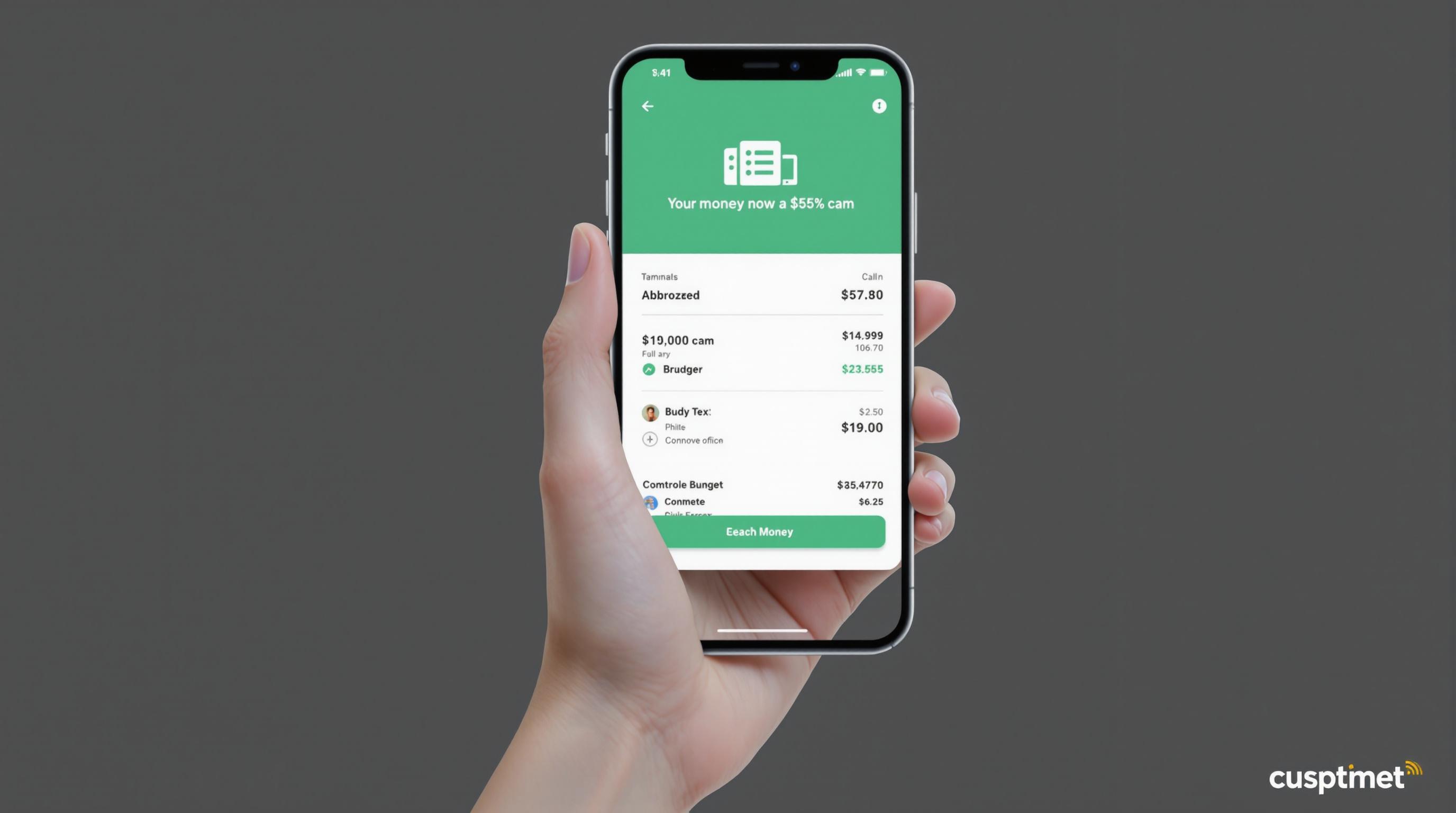Related Articles
- 7 Game-Changing Budget Planners Released Since 2019 That Actually Boost Your Financial Control
- Top 6 Innovative Budgeting Apps Released Since 2019 That Actually Transform Your Money Management
- 7 Game-Changing Budget Planners Released Since 2019 That Outperform Traditional Savings Challenge Tools
- 7 Cutting-Edge Budgeting Apps from the Last 5 Years That Revolutionize Your Savings Game
- 7 Best Digital Emergency Fund Apps of the Last 5 Years Revolutionizing Family Crisis Savings
- Unseen Ripples: How Generational Spending Habits Shape Unexpected Crisis Preparedness Patterns
5 Little-Known Budgeting Hacks From Behavioral Science That Can Revolutionize Your Savings Strategy
5 Little-Known Budgeting Hacks From Behavioral Science That Can Revolutionize Your Savings Strategy
5 Little-Known Budgeting Hacks From Behavioral Science That Can Revolutionize Your Savings Strategy
Introduction to Behavioral Science in Budgeting
Behavioral science explores the ways in which psychological, cognitive, emotional, cultural, and social factors affect decision-making. When it comes to managing money, these subtle influences can either help or hinder our ability to save effectively. Traditional budgeting methods often rely on logical frameworks that don’t always account for human behavior.
Incorporating insights from behavioral science into your budgeting strategy can drastically improve your financial habits. By understanding why we spend impulsively, procrastinate on saving, or fall into mental accounting traps, you can design smarter, more sustainable saving mechanisms.
This article aims to introduce five lesser-known hacks rooted in behavioral science that can transform your savings strategy. These tactics are practical, evidence-based, and easy to implement, empowering you to achieve your financial goals more effortlessly.
1. Use Implementation Intentions to Overcome Procrastination
One common barrier to saving money is procrastination. Behavioral research suggests that forming implementation intentions—specific "if-then" plans—can help bridge the gap between intention and action. For example, instead of vaguely planning to save, you might say, "If I receive my paycheck, then I will transfer $200 to my savings account immediately."
This technique leverages automaticity by creating mental cues that trigger saving actions without requiring ongoing deliberation. Research published by Gollwitzer and Sheeran (2006) shows that such plans increase goal achievement by over 30% in various domains, including financial behaviors.
By making saving a concrete, situational action, you reduce the mental friction that often derails saving efforts. Start by identifying key contexts when you can execute savings moves and define clear responses in advance.
2. Harness the Power of Mental Accounting to Prioritize Savings
Mental accounting is a behavioral concept where people categorize money into different "accounts" based on subjective criteria. While sometimes it leads to irrational decisions, it can be directed positively to create dedicated savings "buckets."
Instead of thinking about your finances as one pot of money, segment your savings into specific categories—emergency fund, vacation, retirement, etc.—each with a distinct mental account. This helps increase motivation and reduces spending from those earmarked funds.
A 2005 study by Thaler advises structuring mental accounts in ways that promote saving. For example, labeling separate bank accounts or using budgeting apps to assign funds to different goals supports this behavior by giving each saving purpose more visibility and commitment.
3. Apply the “Save More Tomorrow” Strategy
This innovative approach, developed by behavioral economist Richard Thaler, encourages individuals to commit in advance to allocating a portion of future salary increases toward savings. This circumvents the pain of reducing current spending by delaying the adjustment.
The “Save More Tomorrow” program has been implemented successfully in employer retirement plans, resulting in significantly higher savings rates than traditional methods. It capitalizes on inertia and loss aversion, easing the transition toward more disciplined savings without impacting current cash flow.
You can replicate this personally by committing to increase your monthly savings each time you get a raise or bonus, thus leveraging your future income rather than demanding tight budgets now.
4. Utilize Commitment Devices to Lock in Savings
Commitment devices are tools or arrangements that restrict future behavior to protect long-term goals. For savings, this could mean setting up automatic transfers that are difficult to reverse or choosing savings accounts with withdrawal penalties.
Behavioral scientists find that when people actively commit to saving mechanisms that reduce temptation or ease procrastination, their chances of success improve markedly. For example, apps that enforce automatic monthly contributions can serve as such devices.
Setting up your savings plan with built-in hurdles to accessing funds reduces the likelihood of impulse withdrawals and enforces discipline, facilitating more consistent accumulation over time.
5. Exploit Social Norms and Peer Influence to Boost Savings
Humans are inherently social, and our financial behaviors are often influenced by peers and community norms. Studies show that people tend to adjust their saving behavior to align with what others in their social circle or demographic cohort are doing.
Leveraging this can involve joining savings groups, participating in financial challenges, or sharing goals with trusted friends or family. Public commitments enhance accountability and tap into the desire to conform to positive social standards.
Programs like employer savings competitions or community-based financial education groups tap into this principle, boosting motivation and adherence to savings plans through social reinforcement (Frey & Meier, 2004).
How to Integrate These Hacks into Your Daily Life
Combining these five behavioral hacks requires more than just understanding them theoretically. The key is gradual integration. Start by implementing one strategy at a time, such as setting up automatic savings transfers (commitment device) and creating "if-then" plans for each paycheck.
Next, organize your mental accounts clearly to visualize your goals and motivations. Participate in social saving commitments or share your goals with a buddy who keeps you accountable. Finally, plan increases in savings aligned with pay raises to build momentum without immediate sacrifices.
Tracking your progress regularly reinforces positive feedback loops and helps adjust strategies if certain tactics don’t fit your lifestyle. Behaviorally informed budgeting isn't about perfect discipline but about smartly structuring your environment to make saving easier.
Addressing Common Savings Pitfalls with Behavioral Insights
A major pitfall is overspending triggered by emotional impulses. Behavioral science advises creating "cooling-off" periods before discretionary purchases, or mentally labeling money so that certain funds are off-limits for everyday spending.
Another challenge is loss aversion, where people fear giving up current consumption. Using the Save More Tomorrow method minimizes this pain by framing increases as delayed rather than immediate losses. Mental accounting also helps by isolating savings from everyday funds.
Finally, procrastination is combated through strong implementation intentions and commitment devices, which nudge behavior in the desired direction without requiring high motivation at every step. Understanding these psychological obstacles allows tailored solutions improving saving outcomes.
Case Studies: Real People Who Transformed Savings Behavior
Consider Jane, who used implementation intentions by linking her paycheck to immediate savings transfers. This clear trigger transformed her erratic saving habits into a disciplined routine, growing her emergency fund steadily over a year.
Mark adopted the mental accounting strategy by creating separate accounts with distinct goals, which prevented spending his vacation fund impulsively. Over time, this approach helped him accumulate enough for several trips without debt.
Both cases highlight how relatively simple behavioral science tactics, without drastic lifestyle changes, can revolutionize savings outcomes effectively and sustainably.
Conclusion: Embrace Behavioral Science for Financial Empowerment
Budgeting doesn't have to be a harsh exercise in self-denial. By applying scientifically supported behavioral hacks, you can design a savings strategy that works with your natural tendencies instead of against them.
Whether through implementation intentions, strategic mental accounting, future-oriented saving commitments, commitment devices, or social influences, these methods provide accessible tools to boost your financial stability.
Start small, be consistent, and let behavioral science guide you to smarter, more sustainable money management habits that can truly revolutionize your saving strategy.
Sources:
Gollwitzer, P. M., & Sheeran, P. (2006). Implementation intentions and goal achievement: A meta-analysis of effects and processes. Advances in Experimental Social Psychology, 38, 69-119.
Thaler, R. H., & Benartzi, S. (2004). Save More Tomorrow™: Using Behavioral Economics to Increase Employee Saving. Journal of Political Economy, 112(S1), S164-S187.
Frey, B. S., & Meier, S. (2004). Social comparisons and pro-social behavior: Testing ‘conditional cooperation’ in a field experiment. American Economic Review, 94(5), 1717-1722.



